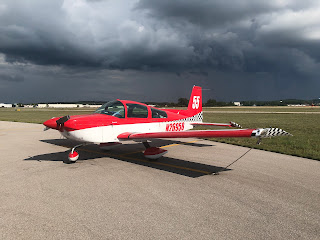The Liberty Gazette
September 27, 2022
Ely Air Lines
By Mike Ely and Linda Street-Ely
Mike: Many celebrities have learned to fly while preparing for roles or in support of their careers in entertainment. For some, aviation was their first love. Such was the case of actor Blade Stanhope Conway, who later went by Bryce Hutchens and then used his real name, Bob Cummings. He made 68 movies, starring in many of them, four stage productions, and 21 television appearances, including his own show from 1955–1959 named, appropriately, “The Bob Cummings Show.” It was later syndicated as “Love That Bob.”
Born Clarence Robert Orville Cummings in Joplin, Missouri, on June 9, 1910, Bob’s flight instructor was also his godfather, Orville Wright. Bob learned to fly in high school, making his first solo flight on March 3, 1927. He often gave airplane rides for $5 to his classmates and residents of Joplin. He also taught others to fly. At that time, there was not a separate certificate for flight instructors, so any commercial pilot could give flying lessons. Imagine being taught to fly by someone who learned from Orville Wright and had his signature on their pilot certificate! When the FAA finally got around to issuing separate flight instructor certificates, Bob Cummings received instructor certificate #1.
Bob studied aeronautical engineering but had to drop out of college when Wall Street crashed in 1929. While in college, he acted in some stage productions and was bitten by the acting bug. He studied at the American Academy of Dramatic Arts in New York City, which paid male actors $14 a week (yes, they paid them to study acting – supply and demand).
After completing his training, he looked for work as an actor. He learned that three-quarters of the Broadway plays were English productions, so he cashed in a life insurance policy, bought a round-trip ticket to Britain, and explored the country by motorcycle. He worked on his English accent and invented the name Blade Stanhope Conway. Then he bribed a janitor at an English theater to post that name on the marquee and had his picture taken standing next to it. After sending out eighty of these pictures to agents in New York, he found he was in demand when he returned. He did something similar later, inventing the name Bryce Hutchens, who hailed from Texas. He became so good with different accents, it was almost a trademark.
Flying, however, was always part of his life. When WWII broke out, Cummings started the first Civil Air Patrol squadron in California, at Glendale’s Grand Central Air Terminal. When that airport closed, the squadron moved to Whiteman Airpark just north of Burbank and still exists. For his CAP duties, he used his own airplane. In 1942, he joined the US Army Air Corps and became a military pilot instructor.
Cummings owned several airplanes, all named Spinach – Spinach I, Spinach II, etc. That’s because he was also a health-food nut. He even wrote a book about it, called, “Stay Young and Vital.” You gotta love that Bob!
ElyAirLines.blogspot.com









